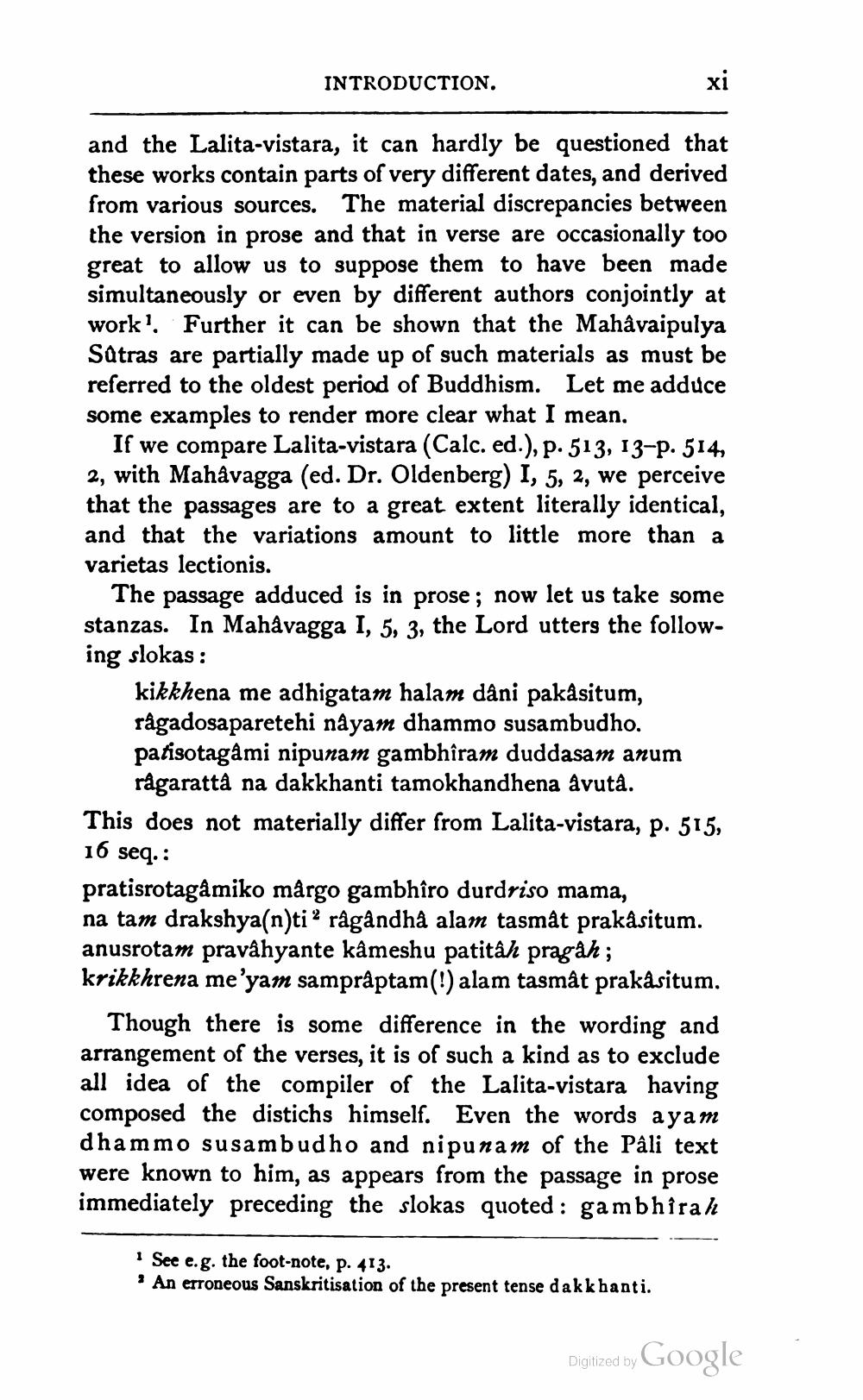________________
INTRODUCTION.
and the Lalita-vistara, it can hardly be questioned that these works contain parts of very different dates, and derived from various sources. The material discrepancies between the version in prose and that in verse are occasionally too great to allow us to suppose them to have been made simultaneously or even by different authors conjointly at work?. Further it can be shown that the Mahâvaipulya Satras are partially made up of such materials as must be referred to the oldest period of Buddhism. Let me adduce some examples to render more clear what I mean.
If we compare Lalita-vistara (Calc. ed.), p. 513, 13–P. 514, 2, with Mahavagga (ed. Dr. Oldenberg) I, 5, 2, we perceive that the passages are to a great extent literally identical, and that the variations amount to little more than a varietas lectionis.
The passage adduced is in prose; now let us take some stanzas. In Mahavagga I, 5, 3, the Lord utters the following slokas :
kikkhena me adhigatam halam dâni pakäsitum, rågadosa paretehi nayam dhammo susambudho. patisotagâmi nipunam gambhîram duddasam anum
rågaratta na dakkhanti tamokhandhena avutà. This does not materially differ from Lalita-vistara, p. 515, 16 seq.: pratisrotagamiko margo gambhîro durdriso mama, na tam drakshya(n)ti? rågândhå alam tasmat prakäsitum. anusrotam praváhyante kâmeshu patitâh prągåh; krikkhrena me'yam sampraptam(!) alam tasmât prakäsitum.
Though there is some difference in the wording and arrangement of the verses, it is of such a kind as to exclude all idea of the compiler of the Lalita-vistara having composed the distichs himself. Even the words ayam dhammo susambudho and nipunam of the Pâli text were known to him, as appears from the passage in prose immediately preceding the slokas quoted : gambhirah
See e.g. the foot-note, p. 413. * An erroneous Sanskritisation of the present tense dakk hanti.
Digitized by Google




